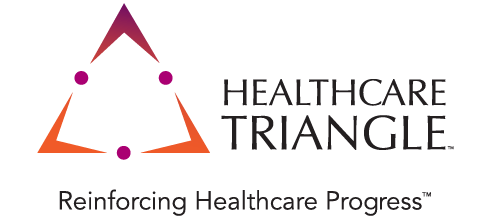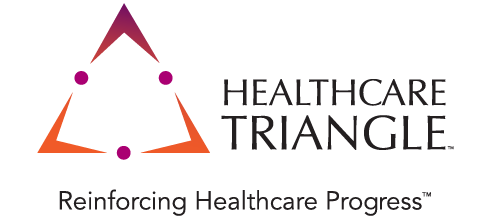The Business of Healthcare after COVID-19 Is Gone
Healthcare Triangle
Apr 28, 2020
Whether it is next week, next month, or next year, affairs in the US will open back up and return to a state of relative calm. But most agree that business as we know it will change significantly. Very few entities, be they small businesses or publicly traded international conglomerates, can weather repeated impacts of something like the COVID epidemic. And healthcare businesses in the United States have already been doubly affected, as they face the same financial and operational stresses that all businesses do, while simultaneously bearing the burden of day-to-day combat and execution just to get everyone through to the other side of the storm. Nobody wants to see and experience another mass-impact event such as this, but there will be more, and whether the next one is another health pandemic, a financial crash, or international conflict, there are things every smart organization will be doing to pivot their business to improve and prepare. Some of the changes will be seen relatively quickly, while others will still take some time, but one thing is almost certain, COVID-19 has become a tipping point from which there will be no simple return to “business as usual”.
With regard to Healthcare in the US specifically, below are 4 critical shifts that all businesses will need to strategize and prepare for. If you aren’t already thinking and planning around these considerations, you’re already falling even further behind and will see an almost inevitable extension to the negative impacts COVID has brought.
- Shift #1 - Telehealth will go mainstream and take center stage. In one sense, it already has out of necessity, but it will go much further. If COVID has shown anything in the business arena, it is that entities simply can no longer survive on 100% in-person services. Everyone will need to take a strategic look at the services they offer and their opportunities for doing so in more flexible and accommodating ways. And, it may not be instantaneous, but regulation and reimbursement will pivot accordingly. So, are you ready? In the rush to get immediate Telehealth capabilities up and running for COVID, have you considered:
a. The unique advantages and disadvantages to your system with each of the primary video vendors?
b. Your plan to scale, deploy, and support across the enterprise?
c. How you will structure and schedule in-person and virtual visits in a blended model for maximum efficiency?
d. What does the appetite and comfort level look like for digital interaction within your patient and provider populations?
e. Financial fool-proofing - steps to assure revenue integrity and maximize reimbursement?
- Shift #2 – Improved affairs for front-line healthcare workers. Provider burnout and healthcare resource shortages (Nurses, Pharmacists, etc) will get worse after COVID is through. While staff around the country have come together beautifully in a mission-oriented manner to address the deadly situation, it is certainly taking an added toll on already fatigued, dissatisfied healthcare personnel. We are losing many highly-skilled practitioners directly to the disease along with the patients they are working to save, and we’ll lose more indirectly once COVID is officially beaten and past. The added stress and fatigue is causing spikes to suicide rates and industry departures, which have already been at all-time highs in recent years. Organizations never having experienced the burnout problem directly unfortunately now will. Those that have already begun to mitigate and pivot toward clinician wellness and efficiency will need to supercharge their efforts, and those who haven’t yet, will need to make a rapid and significant leap forward. For the clinicians and staff who remain in service, combating burnout and creating efficiency - in their EHR systems, in day-to-day operations, and in administrative burdens will be paramount. Fortunately, there’s a lot we can still do to help:
a. Chat bots are here to stay and already taking some of the load off.
b. The major EHRs have never been more ripe and capable of providing efficiency backed directly by data. Many resources still have the potential for 25% efficiency gains.
c. They may be slow-going, but legislative and regulatory changes are on the way.
d. Digital and analytical technology integration has never been more possible and impactful, along with interoperability and cloud-connected services.
- Shift #3 - IT expectations will rise. IT departments will be expected to do more, to do it at a quicker pace, and to do more of it remotely. The needs surrounding COVID have reminded everyone what is possible to achieve in short order when everyone comes together to simply “get it done”. Nobody is going to want to go back to the days where 27 IT projects are in flight but take forever and a day to actually complete. Nor will the state of business operations and rapid-demand digital/remote relevance allow for it any longer. We’ll all expect execution of more projects in a COVID-like manner - rapid, deliberate planning, integrated and innovative teamwork/execution, and a willingness to simply “go” without having every minor detail ironed-out. We’ll see projects take an approach where you get to 80% of the goal or what is needed/desired, get there quickly, and figure out the remaining pieces along the way or even after. Having an end-product and capability in place is better than nothing at all, even if there are a few kinks that need to get worked out. Questions to ponder:
a. Does your business currently operate in a “perfection is the enemy of good enough” model?
b. What is the average duration of your IT-related projects? What does the ideal timeframe look like for a majority?
c. Are there ways you can improve and compress the critical path for your projects?
d. Where do you have opportunities for better cross-functional work and improved collaboration between disparate teams?
- Shift #4 – Remote is here to stay. Sure, many, many Americans and workers in the healthcare industry will return to their offices and day-to-day operations once the COVID-19 risks have cleared, but not everyone, and not everyone permanently. The necessity to continue work operations under stay-at-home orders and measures of social distancing have for a lot of entities brought to light just how much can still be accomplished (and in some cases more) without forcing people together into the same physical space. And what’s more, there is a lot of efficiency to be gained in the remote approach. Workers are not weary from travel and commute, and can function free of office distractions and interruptions. Sure, at home interruptions and other distractions still arise, but if supported properly and provided with proper expectations and management, most individuals can function at equal or better levels than in a mass office environment, and find efficiencies in their home life and dependent care scenarios as well. And let’s not also forget the impact to workplace satisfaction. Happy employees are typically the most loyal and productive employees. Remote work can truly be a win-win for everyone if structured intelligently. As you continue to embark on this journey and plan for the future, consider the following:
a. What technologies are you leveraging or planning to leverage to facilitate remote work, communication, and collaboration? Teams, Zoom, Skype, Slack, etc.
b. Do you have a plan and analytics to accommodate remote resource monitoring and measure productivity?
c. What services or areas does it make the most sense for you to begin the remote transition with? What departments could see the most benefit or gain?
The organizations that strategically and proactively take the lead in the transition with these items are inevitably those that will capitalize on and realize the largest direct gains, along with the quickest return to “business as usual” or really what will eventually become for all “the new normal”. Here’s wishing a smooth and speedy road ahead to those already at the forefront of these ventures, along with those about to embark in earnest.


